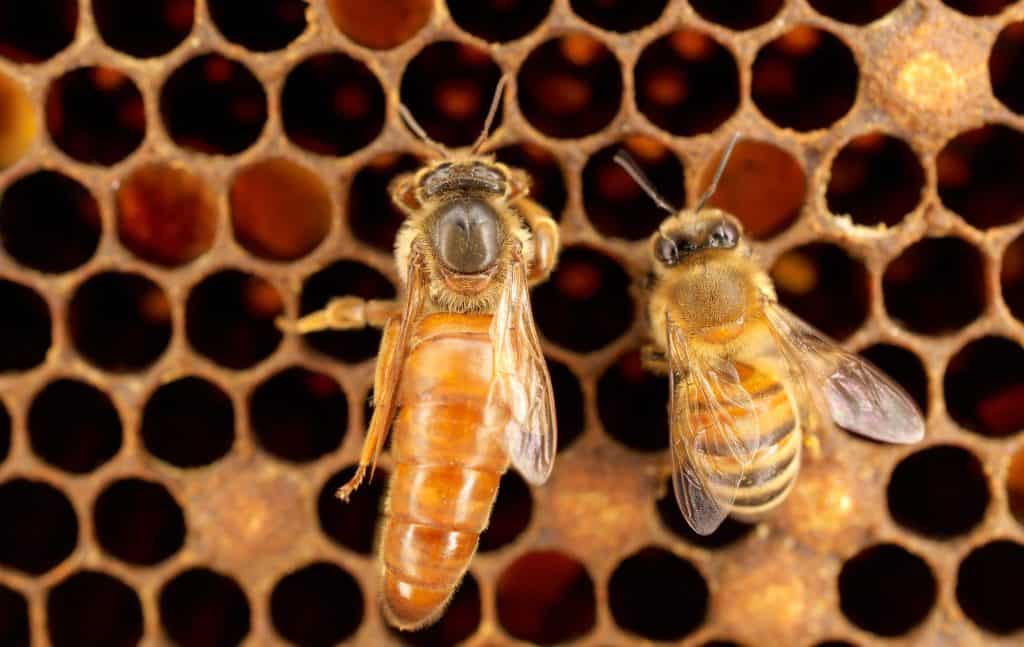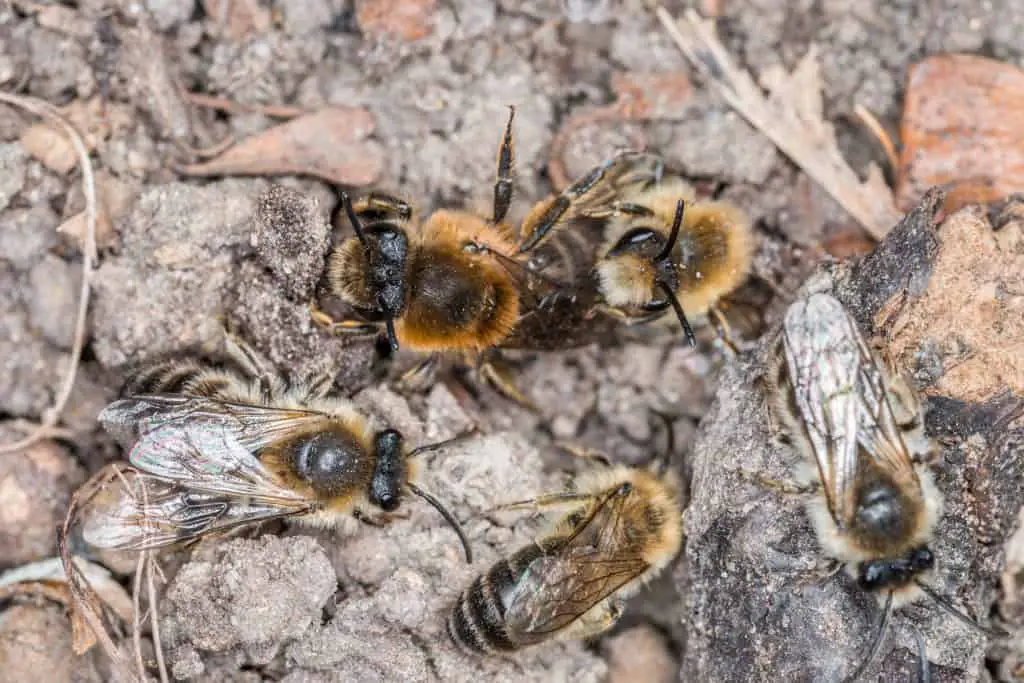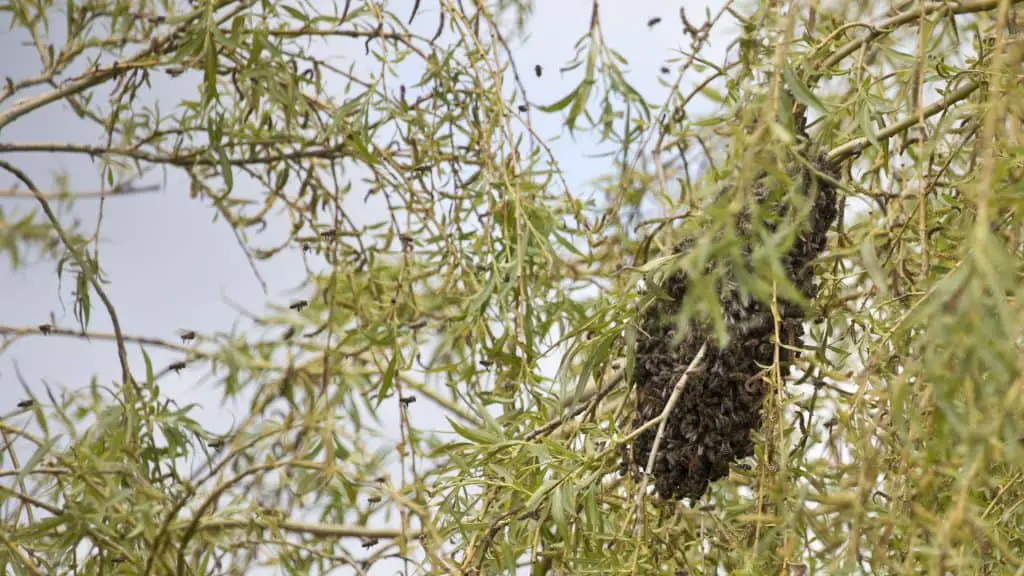We all know that most honey bees can fly, but what about queen honey bees? You may have wondered if queen bees are even capable of flying, since it is fairly rare to see them fly.
Yes, queen bees can and do fly under certain circumstances such as mating or swarming. But they rarely do so outside of these circumstances.
Do Queen Honey Bees Have Wings?

The short answer is yes, honey bee queens do have wings. However, relative to their large body size, these wings are very small. This is actually one way that you can identify a queen from worker bees – her wings look very small in comparison to her body, while worker bees’ wings extend well past the end of their abdomens.
Why Are Queen Honey Bees Poor Fliers?
Queen honey bees are poor fliers because of their relatively large body size and small wings. Because they have such long, thick abdomens paired with wings that are the size of any normal worker bee, they struggle to fly long distances or quickly. If the queen bee gets heavy enough, she may not even be able to fly at all for a period of time.
Do Queen Honey Bees Leave the Hive?
During their laying season, queen honey bees rarely leave the hive. They are mostly focused on laying eggs to create new worker and drone bees, as well as new queens later in the season.
Because queen bees are the only ones who can lay eggs, and they are responsible for the entire reproductive activities of the colony, they do not focus on much besides laying eggs. However, queen honey bees do leave the hive at two points in the year: during mating and during swarming.
Can a Laying Queen Honey Bee Fly?
When she is laying eggs, the queen bee’s body size is so large that it is almost impossible for her to fly. In order to fly, the queen has to lose some of her body weight. The only time that she does this is when the hive is preparing to swarm. At this point, her fellow worker bees put hero n a diet of sorts, restricting her food intake so that she will lose weight. Once she has lost the weight and stopped laying eggs, she can then fly in order to swarm with the rest of the bees.
When Do Queen Bees Need to Fly?
There are certain periods in the honey bee’s life cycle when queen bees need to fly to perform certain necessary activities for the hive’s health and survival. The two main times when honey bee queens fly is during mating, and during swarming.
The rest of the time, worker bees perform all of the necessary duties to keep the colony alive, including foraging for food, nursing the young bees, and defending the nest. The queen bee does not really have any responsibilities outside of the hive, so she rarely needs to fly except during mating and swarming.
How Do Honey Bee Queens Mate?

Late in the summer season, the old queen begins laying fertilized eggs that are fed a special diet and will develop into new queens and further the development of the honey bee species. Once the eggs hatch, they leave the nest about five or six days after they emerge from their brood cells as adults.
When they leave the nest, they fly to a drone congregation area, which is a place where many male drone bees gather and wait for the new queens to come and visit them. This mostly happens on warm, sunny days in the late summer.
Once the queen arrives at the drone congregation area, she mates with several or even many drones in mid-air. She may visit the drone congregation area just once, but it is more likely that she will go there several days in a row to mate.
Once the new queen bees have mated with the drone bees, they store the sperm from the drone bees in their spermathecas. This allows her to fertilize many eggs at once, which is necessary to produce worker bees.
What Is Swarming?

Swarming is a phenomenon which occurs when a colony of honey bees splits into two parts, and the new part of the colony leaves to find a new nest. This happens later in the season when the original colony grows too large for its hive and must break apart to have enough space to store honey and brood.
Before swarming, a type of bee called scout bees search for new nesting sites for the new colony. These bees are worker bees like any other, but they have a special responsibility: to search for new nesting sites and communicate where potential nesting sites are to the rest of the hive.
A colony of about 10,000 honey bees contains anywhere from 400 to 500 scout bees, and about 80% of the scout bees need to agree on the new nesting site in order for the swarm to take place. The scout bees search for nesting sites in the surrounding areas nearby the original nest, and when they find one that they deem appropriate, they return to the nest and tell the other bees where it is.
The scout bees use a special waggle dance to communicate where the new nesting site is. When one scout bee finds a new nesting site, they return and dance for the other scout bees to tell them where the site is. The other scout bees then go and look at the proposed nesting site and see what they think of it. If they like it, they return to the hive and perform the same dance as the first scout bee, telling the other scout bees to also go check out the new nesting site.
Once about 80% of the scout bees are all doing the same dance, meaning that they all like the same nesting site, the colony gets ready to swarm. A young queen and a number of worker bees who gather outside of the colony before swarming will follow the scout bees to the new nesting site. The scout bees guide the new colony by flying amongst them and over them in the proper direction.
Once the new colony arrives at the nesting site, they either accept or reject it. Most of the time they accept it and begin to build new comb, constructing a new nest. However, occasionally they will reject the new nesting site proposed by the scout bees, in which cause the swarming process begins all over again.
The swarming process is a very delicate time in the bees’ lives, as once the new colony leaves the old hive, they have only the food in their stomachs to keep them alive. This means that swarming must happen fairly quickly in order for the bees to survive.
Swarming is one of the few times that the honey bee queen will leave the nest. She must leave the original nest to travel to the new nest found by the scout bees. Before swarming begins, the worker bees restrict the queen bee’s diet so that she will lose weight and be able to fly to keep up with all of the worker bees.
Do Queen Honey Bees Fly Alone?
Queen honey bees never leave the hive alone. They are too important for the survival of the colony to be left to their own devices. Instead, they are escorted everywhere they go by worker bees.
During swarming, the queen bee is accompanied by many worker bees that will form the new colony at a new nesting site. When mating, the queen bee is accompanied in her journey to and from the drone congregation area by several worker bees.
How Far Can a Queen Honey Bee Fly?
Typically, the furthest a queen honey bee will need to travel from the nest is up to seven miles. This occurs only during swarming, when scout bees find nearby new nesting sites for the new colony to move into. When she is flying to drone congregation areas, she must only travel up to three miles from the hive.
Queen honey bees cannot fly very far because they get tired due to their large body size and small wings. Therefore, the colony adapts to their needs and stays close to them when they need to fly.
Can Queen Honey Bees Fly After Mating?
Queen honey bees can fly early in the season immediately after mating and before they begin laying eggs. However, they have no real reason to, as worker bees perform most of the necessary activities for the colony to function and remain healthy. Mated queen honey bees are almost always found inside the hive, except in the case of swarming.

